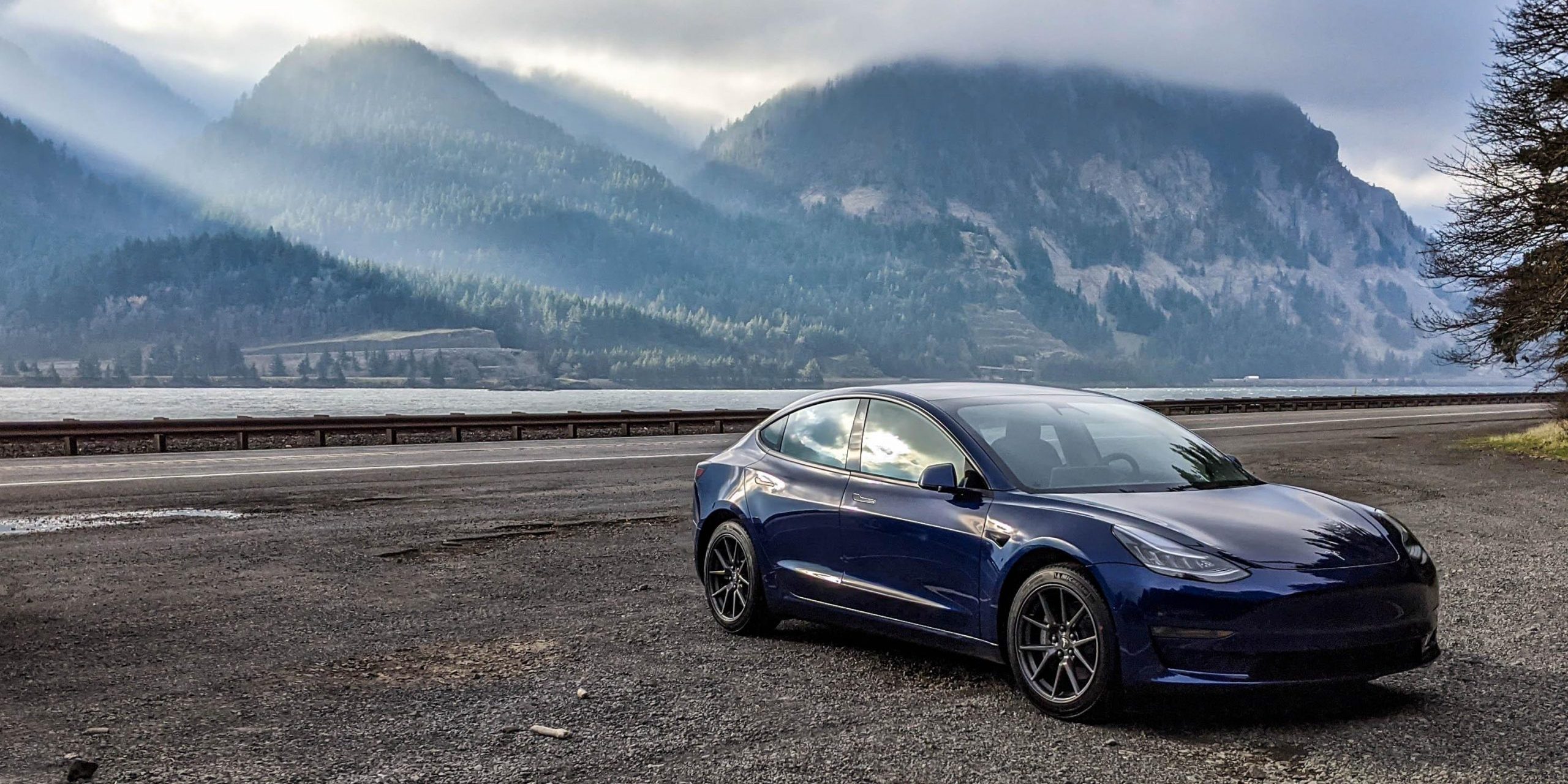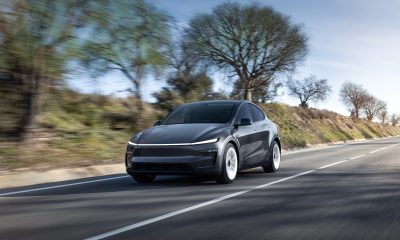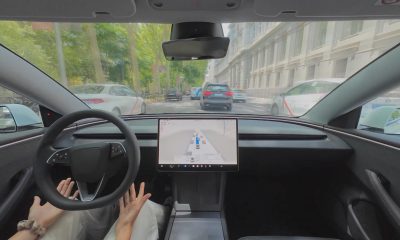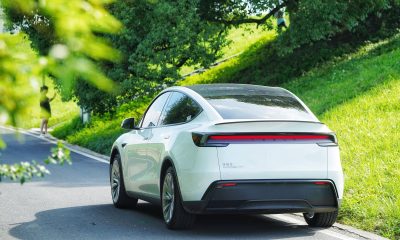

News
Tesla’s 2020 Aftermath: A look at the shorts who said 500k was ‘absurd’
Tesla’s 2020 showing has created an aftermath of reflection from bulls and bears alike. Despite the company coming off of a record year with a massive 500,000 vehicle delivery and production rate, which was considered “absurd” by some short-sellers in years past, Tesla proved the doubters wrong once again.
Everyone knows that the stock market is really an unpredictable and unfathomably tough thing to read. Some of the world’s best analysts can misread even the slightest bit of data and be miles off of what a particular stock accomplishes. Tesla, which is one of the more polarizing stocks despite its 700% climb in 2020, has had doubters since day 1. The difference between doubters of Tesla and doubters of other companies is that Tesla shorts and bears are some of the most vocal on Wall Street because the company’s momentum and hype have been talked about for nearly a decade.
2020 was easily the toughest year for the U.S. automotive market since the Great Recession of 2008. Tesla was one of the few companies that accomplished the feat of sustaining growth through the year of the COVID-19 pandemic, which crippled many industries, not just the automotive one, for most of the year. However, doubts on Tesla set in way back when the company started in 2008. Six years after Tesla built the original Roadster, analysts were still curious about the automaker’s capabilities moving forward and doubted that it would be able to scale its production to half-a-million cars by 2020. The old saying goes, “hindsight is 2020,” and as Tesla reached its goal for the year, it is easy to sit back and judge those who were wrong. However, their reasoning for not reaching 500,000 vehicles was completely flawed, and everything Tesla said it would do years ago has been accomplished.
Mark Spiegel called 500,000 cars in 2020 “absurd”
Mark Spiegel is a notable Tesla short-seller and has been bearish on the automaker’s stock for years. In 2014, Spiegel posted an article to Seeking Alpha, titled, “Why Projections For Tesla To Sell 500,000 Cars In 2020 Are Absurd.”
Spiegel used data like the compound annual growth rate to support his evidence, stating, “If Tesla sells 35,000 cars this year, 500,000 sales in 2020 would imply a six-year CAGR of 56%.” Additionally, Spiegel did not believe that Tesla could scale growth at that rate in six years because “no complex product manufacturer has ever grown that quickly from a revenue base of $3 billion or more.” But hey, there is a first time for everything.
Microsoft was able to scale its CAGR by 32.1% from 1993 to 1999, which is a six-year time span and was identical to Tesla’s outlook that was challenged in the 2014 article. While Microsoft managed a remarkable 32.1% CAGR because of the evergrowing popularity of the computer and other technology, Tesla’s overwhelming growth throughout the same timespan was due to tech developments, industry influence, proving affordability of electric cars, and a consistent growth rate that proved the company was here to stay.
Spiegel’s outlook for 2020 was 186,000 cars sold by Tesla, but the company managed to nearly accomplish this figure in Q4 alone, as it delivered 180,570 cars in the final three months of the year. Spiegel was way off in his predictions, and Tesla’s domination in 2020 was just one of many examples of analysts getting it completely wrong.
Tesla wasn’t a prime candidate for scaling its products, according to Thomas Bartman
In an April 2015 article in the Harvard Business Review, Thomas Bartman wrote an opinionated piece called, “Why Tesla Won’t Be Able to Scale.” Bartman claimed that Tesla’s EVs were “not actually disruptive, which will likely cause it to struggle to scale.” Bartman didn’t have the Model 3 to use as a benchmark at the time, but he doubted that Tesla would be able to sell a vehicle for $35,000, which it did.
“Tesla plans to launch a ‘mainstream’ luxury car, the Model 3,” Bartman wrote, “which it estimates will cost $35,000, although analysts have begun to question the feasibility of reaching that price point.” Tesla did discontinue this variant in late 2020, but the Standard Range Model 3 was available for over three years. The Standard Range+ was only $2,770 more and was more popular because of the range. Also, the SR was not listed on Tesla’s website and had to be ordered in a showroom or over the phone.
Bartman believed that Tesla had launched two good vehicles in the Model S and Model X, but legacy auto would quickly catch up after a few years. However, this has been proven wrong repeatedly, as companies like Mercedes-Benz and Audi have failed to launch effective and competitive EVs that are comparable to Tesla’s models globally. The Model 3 continues to dominate in China and the U.S., and the Model Y is gaining plenty of momentum as it nears the one-year mark since its first deliveries.
Tesla China Model Y attracts flocks of customers in local showrooms
“As Tesla attempts to scale, it’s likely to discover that its internal impediments, combined with competitor responses, make it much harder than anticipated,” Bartman said. “The symptoms of these problems will manifest as product launch delays, cost overruns, and higher than expected prices.”
The only issue is that Tesla was able to internally combat production issues, even though Elon Musk has admitted many times that Model 3 manufacturing was “production hell.” The company has effectively beaten all of its competitors to launching an effective and cost-worthy electric car by launching four of them.
Hindsight is 2020
With 2020 over (thank God), Tesla and analysts are already looking forward to the new year. 2021 has plenty in store for Tesla: Two production facilities in the U.S. and Europe are set to begin manufacturing efforts, the launch of the Cybertruck at the tail-end of the year, and a possible refresh of the Model S and Model X. Moving forward, Tesla shorts may be more cautious, especially considering their traumatic $38 billion loss this year.
News
Tesla UK sales see 14% year-over-year rebound in June: SMMT data
The SMMT stated that Tesla sales grew 14% year-over-year to 7,719 units in June 2025.

Tesla’s sales in the United Kingdom rose in June, climbing 14% year-over-year to 7,719 units, as per data from the Society of Motor Manufacturers and Traders (SMMT). The spike in the company’s sales coincided with the first deliveries of the updated Model Y last month.
Model Y deliveries support Tesla’s UK recovery
Tesla’s June performance marked one of its strongest months in the UK so far this year, with new Model Y deliveries contributing significantly to the company’s momentum.
While the SMMT listed Tesla with 7,719 deliveries in June, independent data from New AutoMotive suggested that the electric vehicle maker registered 7,891 units during the month instead. However, year-to-date figures for Tesla remain 2% down compared to 2024, as per a report from Reuters.
While Tesla made a strong showing in June, rivals are also growing. Chinese automaker BYD saw UK sales rise nearly fourfold to 2,498 units, while Ford posted the highest EV growth among major automakers, with a more than fourfold increase in the first half of 2025.
Overall, the UK’s battery electric vehicle (BEV) demand surged 39% to to 47,354 units last month, helping push total new car sales in the UK to 191,316 units, up 6.7% from the same period in 2024.
EV adoption accelerates, but concerns linger
June marked the best month for UK car sales since 2019, though the SMMT cautioned that growth in the electric vehicle sector remains heavily dependent on discounting and support programs. Still, one in four new vehicle buyers in June chose a battery electric vehicle.
SMMT Chief Executive Mike Hawes noted that despite strong BEV demand, sales levels are still below regulatory targets. “Further growth in sales, and the sector will rely on increased and improved charging facilities to boost mainstream electric vehicle adoption,” Hawes stated.
Also taking effect this week was a new US-UK trade deal, which lowers tariffs on UK car exports to the United States from 27.5% to 10%. The agreement could benefit UK-based EV producers aiming to expand across the country.
News
Tesla Model 3 ranks as the safest new car in Europe for 2025, per Euro NCAP tests
Despite being on the market longer than many of its rivals, the Tesla Model 3 continues to set the bar for vehicle safety.

The Tesla Model 3 has been named the safest new car on sale in 2025, according to the latest results from the Euro NCAP. Among 20 newly tested vehicles, the Model 3 emerged at the top of the list, scoring an impressive 359 out of 400 possible points across all major safety categories.
Tesla Model 3’s safety systems
Despite being on the market longer than many of its rivals, the Tesla Model 3 continues to set the bar for vehicle safety. Under Euro NCAP’s stricter 2025 testing protocols, the electric sedan earned 90% for adult occupant protection, 93% for child occupant protection, 89% for pedestrian protection, and 87% for its Safety Assist systems.
The updated Model 3 received particular praise for its advanced driver assistance features, including Tesla’s autonomous emergency braking (AEB) system, which performed well across various test scenarios. Its Intelligent Speed Assistance and child presence detection system were cited as noteworthy features as well, as per a WhatCar report.
Other notable safety features include the Model 3’s pedestrian-friendly pop-up hood and robust crash protection for both front and side collisions. Euro NCAP also highlighted the Model 3’s ability to detect vulnerable road users during complex maneuvers, such as turning across oncoming traffic.
Euro NCAP’s Autopilot caution
While the Model 3’s safety scores were impressive across the board, Euro NCAP did raise concerns about driver expectations of Tesla’s Autopilot system. The organization warned that some owners may overestimate the system’s capabilities, potentially leading to misuse or inattention behind the wheel. Even so, the Model 3 remained the highest-scoring vehicle tested under Euro NCAP’s updated criteria this year.
The Euro NCAP’s concerns are also quite interesting because Tesla’s Full Self-Driving (FSD) Supervised, which is arguably the company’s most robust safety suite, is not allowed for public rollout in Europe yet. FSD Supervised would allow the Model 3 to navigate inner city streets with only minimal human supervision.
Other top scorers included the Volkswagen ID.7, Polestar 3, and Geely EX5, but none matched the Model 3’s total score or consistency across categories. A total of 14 out of 20 newly tested cars earned five stars, while several models, including the Kia EV3, MG ZS, and Renault 5, fell short of the top rating.
Elon Musk
Why Tesla’s Q3 could be one of its biggest quarters in history
Tesla could stand to benefit from the removal of the $7,500 EV tax credit at the end of Q3.

Tesla has gotten off to a slow start in 2025, as the first half of the year has not been one to remember from a delivery perspective.
However, Q3 could end up being one of the best the company has had in history, with the United States potentially being a major contributor to what might reverse a slow start to the year.
Earlier today, the United States’ House of Representatives officially passed President Trump’s “Big Beautiful Bill,” after it made its way through the Senate earlier this week. The bill will head to President Trump, as he looks to sign it before his July 4 deadline.
The Bill will effectively bring closure to the $7,500 EV tax credit, which will end on September 30, 2025. This means, over the next three months in the United States, those who are looking to buy an EV will have their last chance to take advantage of the credit. EVs will then be, for most people, $7,500 more expensive, in essence.
The tax credit is available to any single filer who makes under $150,000 per year, $225,000 a year to a head of household, and $300,000 to couples filing jointly.
Ending the tax credit was expected with the Trump administration, as his policies have leaned significantly toward reliance on fossil fuels, ending what he calls an “EV mandate.” He has used this phrase several times in disagreements with Tesla CEO Elon Musk.
Nevertheless, those who have been on the fence about buying a Tesla, or any EV, for that matter, will have some decisions to make in the next three months. While all companies will stand to benefit from this time crunch, Tesla could be the true winner because of its sheer volume.
If things are done correctly, meaning if Tesla can also offer incentives like 0% APR, special pricing on leasing or financing, or other advantages (like free Red, White, and Blue for a short period of time in celebration of Independence Day), it could see some real volume in sales this quarter.
You can now buy a Tesla in Red, White, and Blue for free until July 14 https://t.co/iAwhaRFOH0
— TESLARATI (@Teslarati) July 3, 2025
Tesla is just a shade under 721,000 deliveries for the year, so it’s on pace for roughly 1.4 million for 2025. This would be a decrease from the 1.8 million cars it delivered in each of the last two years. Traditionally, the second half of the year has produced Tesla’s strongest quarters. Its top three quarters in terms of deliveries are Q4 2024 with 495,570 vehicles, Q4 2023 with 484,507 vehicles, and Q3 2024 with 462,890 vehicles.
-

 Elon Musk4 days ago
Elon Musk4 days agoTesla investors will be shocked by Jim Cramer’s latest assessment
-

 News1 week ago
News1 week agoTesla Robotaxi’s biggest challenge seems to be this one thing
-

 Elon Musk2 weeks ago
Elon Musk2 weeks agoFirst Look at Tesla’s Robotaxi App: features, design, and more
-

 News2 weeks ago
News2 weeks agoSpaceX and Elon Musk share insights on Starship Ship 36’s RUD
-

 News2 weeks ago
News2 weeks agoWatch Tesla’s first driverless public Robotaxi rides in Texas
-

 News1 week ago
News1 week agoWatch the first true Tesla Robotaxi intervention by safety monitor
-

 News2 weeks ago
News2 weeks agoTesla has started rolling out initial round of Robotaxi invites
-

 Elon Musk2 weeks ago
Elon Musk2 weeks agoTesla to launch in India in July with vehicles already arriving: report

















